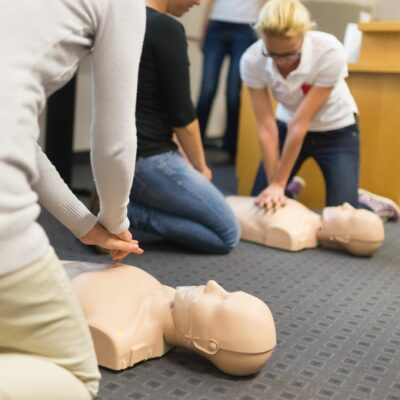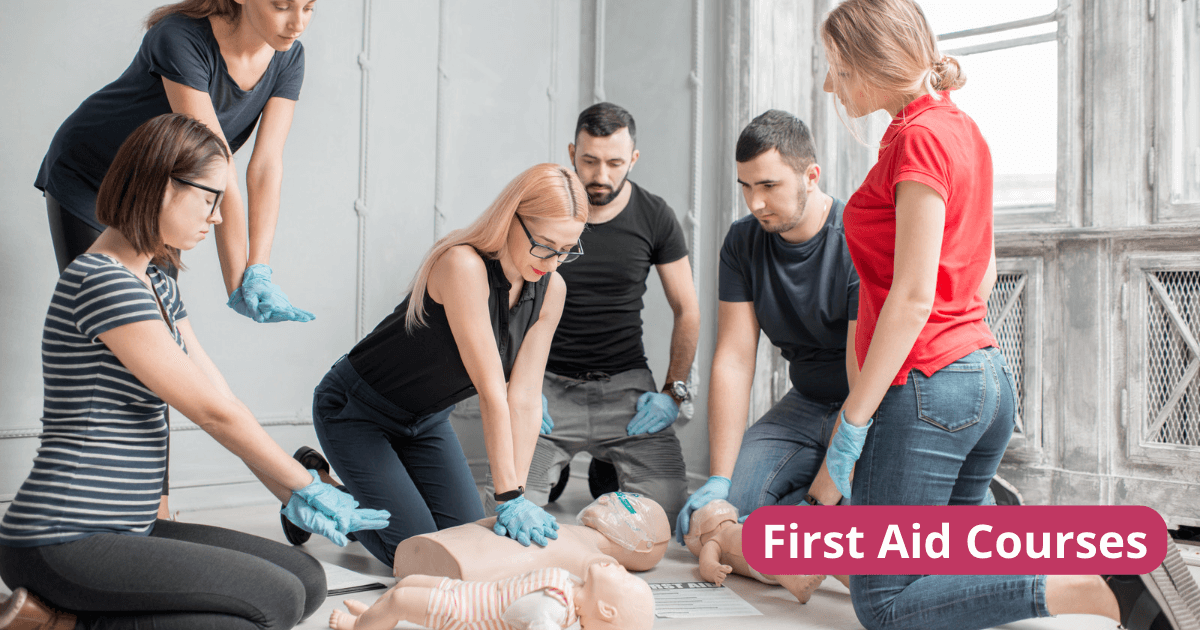Introduction
Cardiopulmonary Resuscitation (CPR) is more than simply a series of upper body compressions and breaths; it's a life-saving ability that can be the difference in between life and fatality in emergency scenarios. The expertise acquired from a first help course or CPR course can equip individuals to respond properly when confronted with a cardiac arrest, choking case, or various other important emergencies. This short article checks out the real-life applications of mouth-to-mouth resuscitation, highlighting its value and the effect of training on saving lives.


Real-Life Applications of mouth-to-mouth resuscitation: When Training Saves Lives
Understanding CPR
CPR is an essential emergency procedure utilized to protect brain function until more actions are required to recover spontaneous blood circulation and breathing. It includes two parts:
Chest Compressions: These mimic the heart's pumping activity to keep blood flow. Rescue Breaths: These give oxygen to the lungs, important for survival.The effectiveness of CPR dramatically boosts when carried out instantly after heart attack. Studies show that instant CPR can increase or triple the chances of survival for victims.
Importance of First Aid Courses
First aid programs outfit people with essential abilities past CPR, including wound treatment, acknowledging strokes, and managing cracks. By participating in these training courses, you're not just learning more about emergencies; you're preparing yourself to act emphatically when it matters most.
Key Elements of First Aid Courses
- Basic Life Assistance (BLS): Covers adult, child, and infant mouth-to-mouth resuscitation techniques. Choking Relief Techniques: Consists of back blows and abdominal thrusts. Wound Management: Exactly how to cleanse and dress wounds properly. Recognizing Emergencies: Understanding when to call for assistance versus managing a situation independently.
The Function of mouth-to-mouth resuscitation in Cardiac Arrest Situations
Every year, thousands of thousands experience heart attack outside health centers. Without immediate treatment, the survival price goes down drastically every minute that passes without CPR.
Statistics on Heart attack Survival Rates
|Time Without mouth-to-mouth resuscitation|Survival Rate (%)|| ------------------|-------------------|| 1 Minute|90|| 5 Minutes|50|| 10 Minutes|10|
Source: American Heart Association
Being trained in mouth-to-mouth resuscitation makes sure that onlookers can step in confidently throughout these essential moments.
Real-Life Study Showing Effective CPR Application
Case Research study 1: The Quick-Thinking Bystander
In a busy coffee shop one sunny mid-day, an individual collapsed due to heart attack. A close-by restaurant that had finished a first aid and mouth-to-mouth resuscitation course delved into activity. They began administering upper body compressions while one more customer called 911. Within mins, paramedics showed up and utilized an Automated External Defibrillator (AED), inevitably reviving the patient.
Case Research study 2: Workplace Emergency
During a corporate training event, a worker all of a sudden dropped unconscious. Fortunately, a number of colleagues were licensed in both emergency treatment training courses and advanced life support strategies. Their quick response included calling emergency situation solutions while performing high-grade mouth-to-mouth resuscitation till aid arrived.
Why Join CPR Courses?
CPR courses offer hands-on training that builds self-confidence in your capabilities throughout emergencies. Right here are some compelling factors to sign up:
Life-Saving Skills: You find out exactly how to save lives. Boost Self-confidence: Practical exercises assistance seal your skills. Certification Opportunities: Several training courses supply certificates upon completion. Community Effect: Educated people add positively to culture by awaiting emergencies.
What Are the Different Types of CPR Courses Available?
When considering which training program matches your demands best, it is essential to understand the various types of readily available programs:
Basic Adult/Child/Infant CPR Course
This course concentrates on age-specific methods tailored for grownups, kids, and babies with thorough hands-on technique on mannequins.
Advanced Cardiovascular Life Support (ACLS)
Geared toward health care experts, ACLS builds upon standard life assistance abilities with innovative interventions like medicine administration and advanced air passage management.
Pediatric Advanced Life Support (CHUMS)
Designed for doctor that take care of critically sick babies and kids; friends includes situations certain to pediatric emergencies.
Online vs In-Person Training
Many organizations currently supply online components which can supplement conventional class knowing however do not replace hands-on method necessary for grasping abilities like upper body compressions.
Benefits of Having a First Aid Certificate
Obtaining an emergency treatment certification demonstrates your commitment to safety and security and readiness in different settings-- whether in the house or job-- boosting both expert credibility and individual guarantee when emergency situations arise.
Career Advantages
Having accreditation can enhance employability in fields such as education, health care sectors, physical fitness training industries where safety is paramount.
Common Misconceptions About CPR
It's necessary to eliminate misconceptions surrounding this vital skill set:
Myth # 1: "Only Medical Professionals Needs To Carry out mouth-to-mouth resuscitation"
Fact: Any person can perform basic life-saving techniques if educated appropriately; you don't require clinical expertise!
Myth # 2: "You Can Hurt Someone by Carrying out CPR"
While it holds true there's some threat entailed-- it's far outweighed by the possible advantages when carried out correctly!
Myth # 3: "CPR Is Just Essential For Adults"
Children additionally call for timely treatments; hence recognizing pediatric methods is similarly vital!

FAQs Regarding Real-Life Applications of CPR
FAQ 1: What should I do if I see someone collapse?
If you witness somebody collapse:
- Check responsiveness Call emergency services Begin performing CPR right away if they show no indications of breathing
FAQ 2: How typically need to I restore my certification?
Most organizations recommend restoring your emergency treatment certificate every two years as a result of progressing guidelines and practices.
FAQ 3: Can I learn CPR online?
While online courses offer useful details, hands-on practice is required for mastering skills properly-- seek hybrid alternatives if Canberra First Aid Course Near Me possible!
FAQ 4: What are some suggestions for doing effective breast compressions?
Aim for:
- A depth of at least 2 inches A price around 100-120 compressions per minute Allow full recoil between compressions without raising hands off the breast
FAQ 5: Do I need unique tools for performing rescue breaths?
No unique tools is called for! Nonetheless using barrier tools like face shields can improve safety while offering rescue breaths if available.
FAQ 6: What duty does AED play combined with CPR?
Automated Exterior Defibrillators assess heart rhythm & & advise whether shocks are required which dramatically increases opportunities of survival when utilized alongside premium breast compressions!
Conclusion
The real-life applications of CPR are obvious; they extend much beyond theoretical understanding into real scenarios where lives are conserved with decisive actions taken by qualified people. Enlisting in a detailed first aid course or going to specialized CPR courses equips you with indispensable skills that could make all the distinction throughout an emergency situation situation-- not just profiting others however equipping yourself as well! The time spent today prepares you for whatever tomorrow may bring-- and isn't that something worth considering?